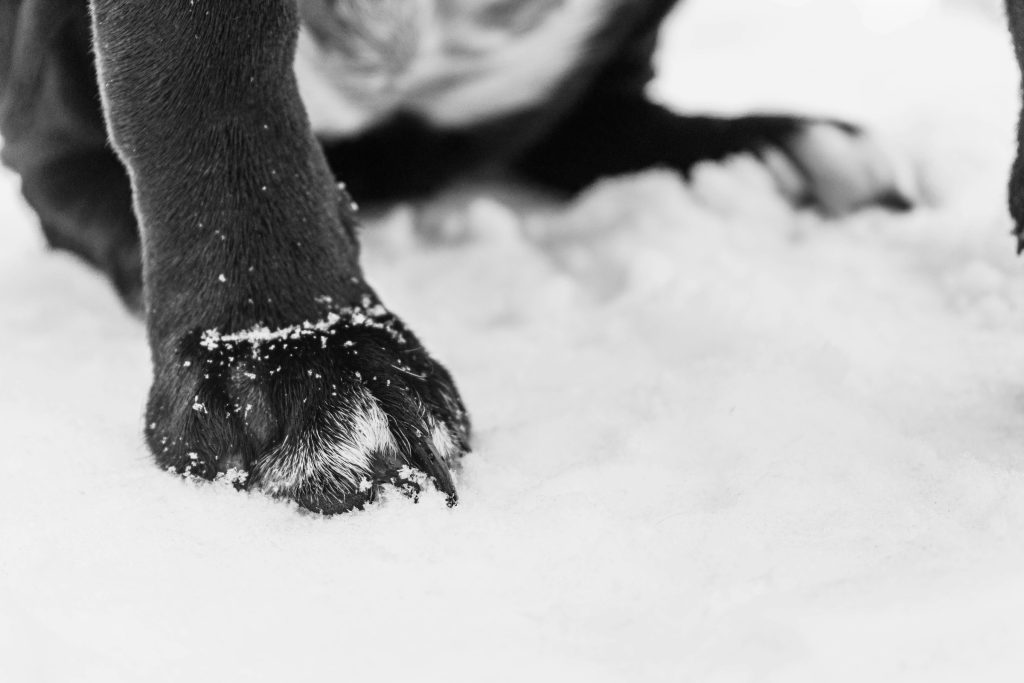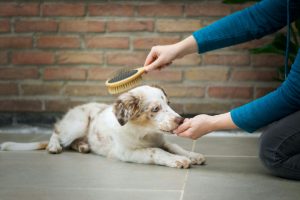
Best Winter Paw Care Tips for Dogs in the City
City winters can be brutal on your dog’s paws. Between sidewalk salt, freezing pavement, and hidden ice, it’s no surprise dogs suffer from cracked pads, burns, and even frostbite. If you’re a busy pet parent living in an apartment, these winter paw care for dogs tips will help keep your pup safe and comfy all season long.
1. Wipe Paws After Every Walk
Use a damp cloth or pet-safe paw wipes to clean off road salt, ice melt chemicals, and grime after each outing. This helps prevent licking and chemical burns.
2. Use a Paw Balm or Wax
Apply a paw balm before walks to create a protective barrier. Choose a natural, non-toxic formula so it’s safe if licked. Reapply after each outing for maximum protection.
3. Trim Hair Between the Toes
Long paw fur traps ice, salt, and debris. Trim excess hair between the pads to reduce clumping and improve grip on icy surfaces.
4. Choose Safe Walking Routes
Avoid heavily salted sidewalks when possible. Stick to cleared park paths or dog-friendly buildings that use pet-safe ice melt products. Learn about chemical risks from the ASPCA Animal Poison Control Center.
5. Consider Dog Booties
They may take some getting used to, but dog booties offer the best protection against salt, snow, and ice. Start with short indoor sessions to build comfort before winter hits.
6. Watch for Signs of Frostbite or Burn
Redness, swelling, limping, or licking can all signal trouble. Contact your vet immediately if you notice any of these after a cold-weather walk. Learn more about exposure risks from VCA Hospitals.
7. Moisturize After Walks
Winter air is dry. Apply a pet-safe paw moisturizer at night to prevent painful cracks and promote healing. Avoid human lotions, which can be harmful if licked.
With a little extra care, your city dog can enjoy winter safely and comfortably. These simple paw protection habits can help you avoid emergency vet visits and keep tails wagging through the snow.
Frequently Asked Questions
Are sidewalk salts really dangerous for dogs?
Yes. Many contain chemicals that burn paws or are toxic if licked. Always wipe paws after walks and avoid salted areas when possible.
Do dogs really need booties?
Not all dogs do—but they’re incredibly helpful in cities where salt, ice, and sharp debris are common. Try them on short walks first to help your dog adjust.
Can I use Vaseline on my dog’s paws?
It’s okay in small amounts, but dedicated paw balms are safer. They’re non-toxic, absorb better, and often have healing ingredients like shea butter or beeswax.
What should I do if my dog’s paws start bleeding?
Rinse the area gently with saline, apply light pressure with a clean cloth, and contact your vet. Minor cracks can worsen quickly in winter conditions.

Join the Busy Pet Parent Newsletter!
Get easy routines, time-saving tips, and the latest gear reviews—delivered straight to your inbox.
Perfect for busy pet owners, apartment dwellers, and anyone who wants a happy, healthy companion (without the stress).
Exclusive guides & checklists
Product recommendations & deals
No spam—unsubscribe anytime!




